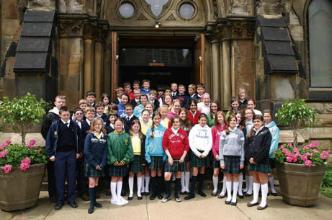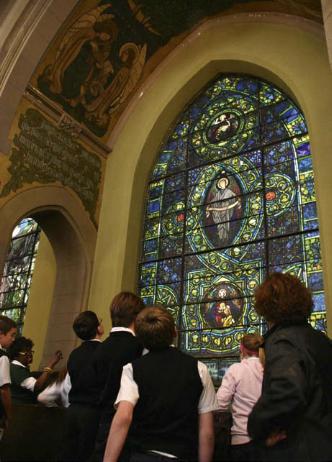

8
BCD Special Report on
Historic Churches
17th annual edition
provided at no or low cost; staf, volunteer
and clergy time; utilities; in-kind and direct
cash support. In today’s dollars, a conservative
estimate is over $200,000 in subsidy per
year, an amount that never appears on any
church budget. Tis is one way of quantifying
the social safety net that congregations
provide, and bolsters the argument for
more private and public spending.
At the time of Partners’ founding in
1989, no state or federal government agency
granted funds to historic religious sites,
due to the prevailing interpretation of
the US Constitution’s provision regarding
the separation of church and state. In the
following decade, through local and national
advocacy and an increasing understanding of
the public importance of sacred places, state
preservation funds (which vary considerably
in size, purpose, and funding source from state
to state) became available to congregations.
Under the Clinton administration, the Save
America’s Treasures grant programme
– modest in size by British standards,
but representing a big step forward for
American cultural funding – was established.
After joint advocacy by Partners and the
National Trust for Historic Preservation the
programme opened its funding to active
houses of worship. In the past 10 years,
58 historic sacred places have received
$15.8 million through this programme.
Broadening the constituency
Te challenge, and the opportunity, for
historic churches is to make better use of
this dynamic and to bolster their case for
public support, as well as continued support
from members and other individuals. Tis
more expansive constituency, properly
recognised and cultivated, has a vested
interest in the health and wellbeing of these
sacred places. And there are also other
natural, if often untapped, groups that
have an interest in what happens at and to
a particular sacred place: past members
and families historically associated with
a congregation; people interested in the
culture and heritage of their town or city;
neighbours, friends, and colleagues of lay
and clergy; those invested in re-building the
neighbourhoods and commercial districts
anchored by so many of our sacred places.
We now also have a new opportunity to
expand the Sacred Places at Risk research. By
exploring the complex and interrelated ways
in which a congregation impacts its immediate
community we can discover the ‘halo efect’
it has on the local economy (spending and
job creation); property values; green space
and trees; and social service provision. We
are currently piloting this new research
methodology in Philadelphia, and hope to
conduct a larger national research project.
What we know is always unfolding, but for
certain it will both deepen and broaden
our understanding of the dynamics within
congregations and between a congregation
and its community. Most importantly, this
knowledge, although never perfect, will help
us serve sacred places more efectively.
Elementary school children visit the Second Presbyterian Church in Chicago, Illinois as part of the frst
educational programme for children ofered by Partners for Sacred Places, Chicago.
Inside the church, the children learn about Louis Comfort Tifany’s stained glass.